|
August is National Sandwich Month. While sharing some of our favorite sandwich recipes, we’re also presenting a year of sandwich holidays (below). Plan to celebrate!
The modern European sandwich began in England in 1762 as a portable, convenient finger food. The concept spread over time to countries worldwide, resulting in the stuffed pita pockets of the Middle East to Korean bao, Japanese katsu sando, and Vietnamese bânh mì.
So what exactly is a sandwich? You know what it is, but just for the record:
A classic sandwich comprises two slices of bread with a filling.
The filling can be just about anything but typically consists of cheese, fish, meats, protein salads (chicken, egg, tuna), or vegetarian/vegan ingredients, that are placed between the slices.
The bread can be slices from a loaf or can be a roll (bagel, hamburger roll, hero roll, hot dog roll, kaiser roll, etc.), international bread (baguette, ciabatta, croissant [photo #1], focaccia), flatbread wraps (photo #4), and even non-bread, like lettuce leaves (photo #5).
Within the overall realm of “sandwiches,” there are at least nine sub-categories. Here they are, per our own analysis and breakdown.
CATEGORIES (TYPES) OF SANDWICHES
Note that within the nine types of sandwiches, the definition of a sandwich as two or more pieces of bread with filling between them varies in the case of open-faced sandwiches, specialty sandwiches, and wraps.
Classic sandwich. Any filling between two slices of bread, a sliced roll, biscuit, croissant, bagel, etc. Two slices of thicker flatbreads, such as focaccia and naan, can make a conventional sandwich. Hero and hoagie sandwiches also fall into this category. So do donuts and waffles substituting for bread, Paula Deen style.
Dessert/sweet sandwich. These include regular sandwiches with sweet fillings: Marshmallow Fluff and jelly or peanut butter, Nutella, and banana and chocolate spread, for example. We’ll add ice cream sandwiches, “frozen sandwiches” which sandwich ice cream betweern thin slices of cake or cookies.
Double-decker sandwich or stacked sandwich. A conventional sandwich with at least three slices of bread. A club sandwich, for example, can be made from three or four slices of bread. A Big Mac is a double-decker sandwich. A Dagwood is the king of stacked sandwiches.
Fried sandwich. A classic sandwich with a filling is dipped into an egg mixture, with or without a breadcrumb coating, and then deep-fried or pan-fried. A Monte Cristo sandwich is an example.
Grilled sandwich. This category includes sandwiches grilled on a flat grill, a wire grill, a grill pan on the stove, or a panini press. The objective is to melt or warm the ingredients. The best example is a grilled cheese sandwich.
Open-faced or open-face sandwich, a.k.a. an open sandwich, tartine in French, and smørrebrød in Danish. It uses only one slice of bread with the filling piled on top. Hot sandwiches such as roast beef and gravy are often served open-faced. Avocado toast, Eggs Benedict, and Welsh rarebit [rabbit] are also open-faced sandwiches, as is the infamous creamed chipped beef on toast. A tostada could be given a pass into this group.
Paleo sandwich. Bread is not part of a paleo diet, so paleo sandwiches use cabbage, collard, or lettuce leaves, or cauliflower patties as their base. Depending on the base, they can be crafted like conventional sandwiches or wraps (photo #5).
Party sandwich or specialty sandwich. This comprises a fancy presentation typically made for parties or afternoon tea. Examples include:
Pinwheel or rolled sandwich. It’s made with thin bread or a tortilla base; a thin layer of filling is spread over the entire base. It is then rolled into a tight tube and sliced into rounds. When laid flat, these rounds resemble pinwheels (photo #6).
Finger sandwich, tea sandwich, or buffet sandwich. Two bites’ worth of sandwich are cut into shapes from rectangles to triangles to rounds, with the crusts cut off. A checkerboard or mosaic sandwich is made from contrasting squares of white bread and whole wheat or pumpernickel bread. A ribbon sandwich is a layered finger sandwich with multiple fillings and two kinds of bread.
Loaf sandwich or sandwich cake. A loaf of bread sliced into two or more layers, filled, and made to look like a frosted layer cake (photo #7).
Wrap sandwich. A sandwich filling is rolled in a soft flatbread such as lavash, naan, piadina, pita, or tortilla. Burritos, quesadillas, and tacos can also be considered as part of this group. And, while it isn’t made with bread, a cabbage, collard, or lettuce wrap (photo #5) also belongs here.
> The history of the sandwich.
> The different types of sandwiches: a glossary.
SANDWICH HOLIDAYS
January
January 14: National Hot Pastrami Sandwich Day
March
March 14: National Reuben Sandwich Day
March 18: National Sloppy Joe Day
April
First Thursday: National Burrito Day
April 12: National Grilled Cheese Sandwich Day
May
May: National Hamburger Month
May 5: National Hoagie Day
Third week: British Sandwich Week*
May 28: National Hamburger Day
July
July: National Hot Dog Month
July 21: National Hot Dog Day
August
August: National Sandwich Month
August: National Panini Month
August 2: National Ice Cream Sandwich Day
August 11: National Panini Day
August 23: National Cuban Sandwich Day
September
September 1: National Gyro Day
September 14: National Eat A Hoagie Day
September 15: National Double Cheeseburger Day
September 17: National Monte Cristo Day
September 18: National Cheeseburger Day
Last Friday: German Butterbrot Day or German Sandwich Day†
October
October 9: National Submarine-Hoagie-Hero-Grinder Day
Third Week In October: National Kraut Sandwich Week
November
November 3: National/World Sandwich Day
November 4: National Submarine Sandwich Day
November 9: National Fried Chicken Sandwich Day
|
|
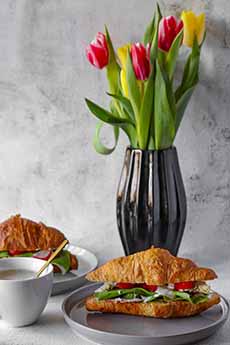
[1] A sandwich is a filling in between two slices of bread. That includes rolls and other breads such as croissants (photo © Andrea Roxana | Unsplash).
 [2] There are dessert sandwiches, too, like this chocolate panini served with a side of ice cream (photo © Parma 8200 | Bloomington, MN [alas, permanently closed]).
[2] There are dessert sandwiches, too, like this chocolate panini served with a side of ice cream (photo © Parma 8200 | Bloomington, MN [alas, permanently closed]).

[3] Lobster rolls are a sandwich, as are hot dogs and burgers (photo © Taste Of Home).
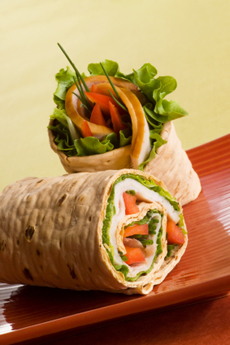
[4] Wrap sandwiches are easy to make: Just roll the ingredients in a tortilla or other flatbread (photo © Cloud Food | iStock Photo).
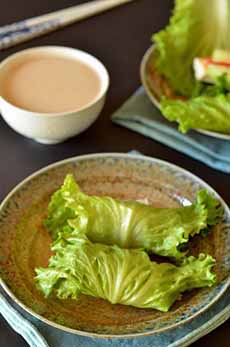
[5] Can’t have bread? Make your wrap sandwich with cabbage, collard, or lettuce leaves (photo © Coffee And Quinoa).
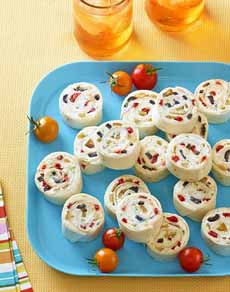
[6] Pinwheel sandwiches are fancy party fare (photo © Hidden Valley).
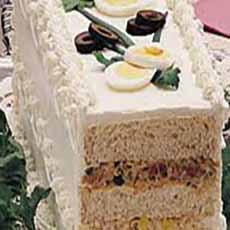
[7] A sandwich loaf or party sandwich loaf is a sandwich made from a loaf of bread and iced with cream cheese or other savory to resemble a layer cake. Here’s the recipe for this one (photo © Betty Crocker).
|


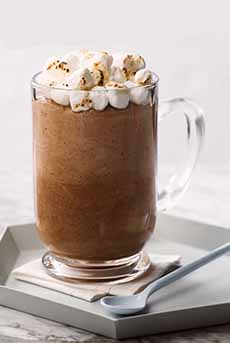



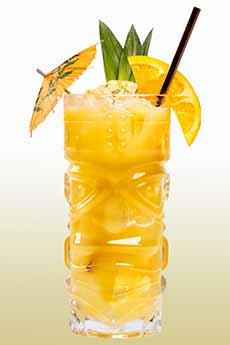
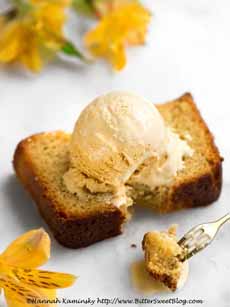


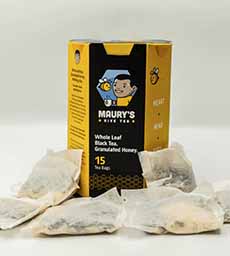

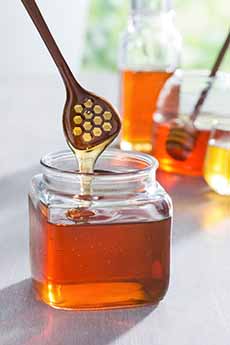


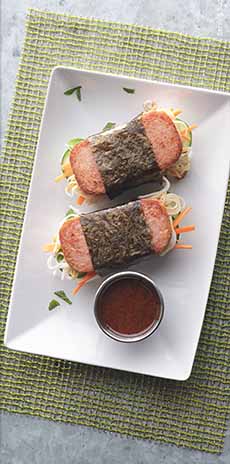
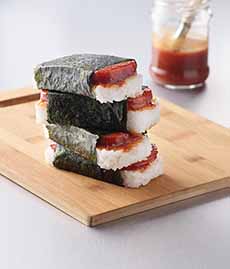
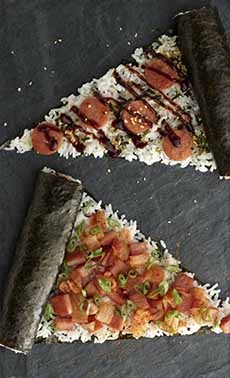
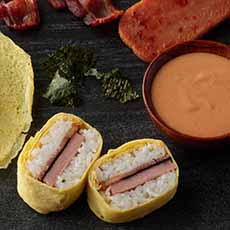

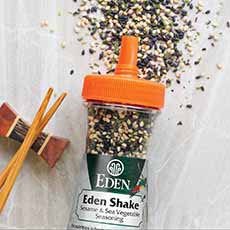

 [2] There are dessert sandwiches, too, like this chocolate panini served with a side of ice cream (photo © Parma 8200 | Bloomington, MN [alas, permanently closed]).
[2] There are dessert sandwiches, too, like this chocolate panini served with a side of ice cream (photo © Parma 8200 | Bloomington, MN [alas, permanently closed]).



